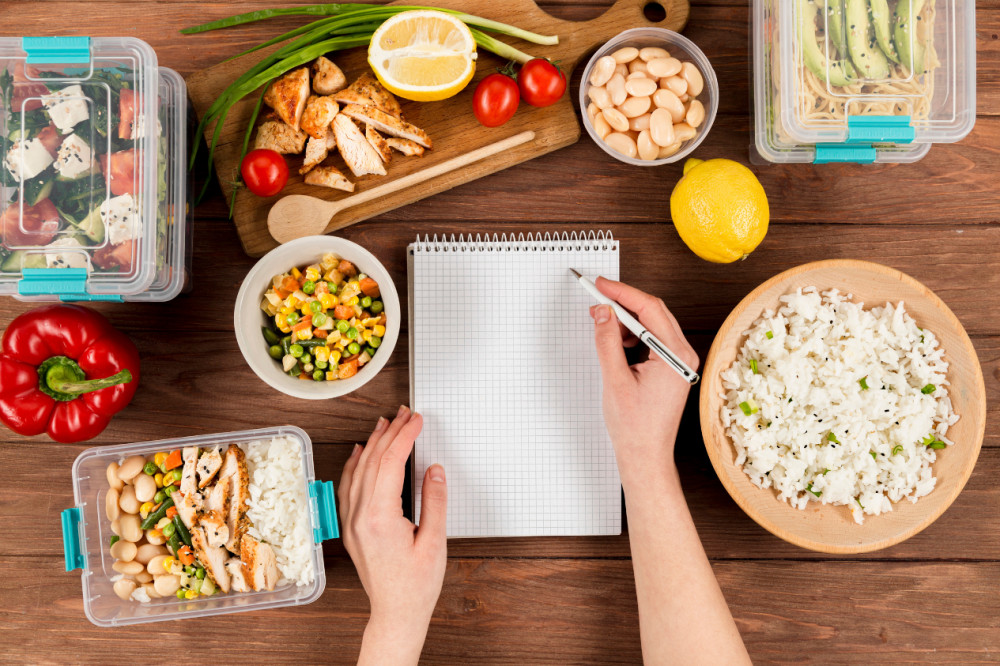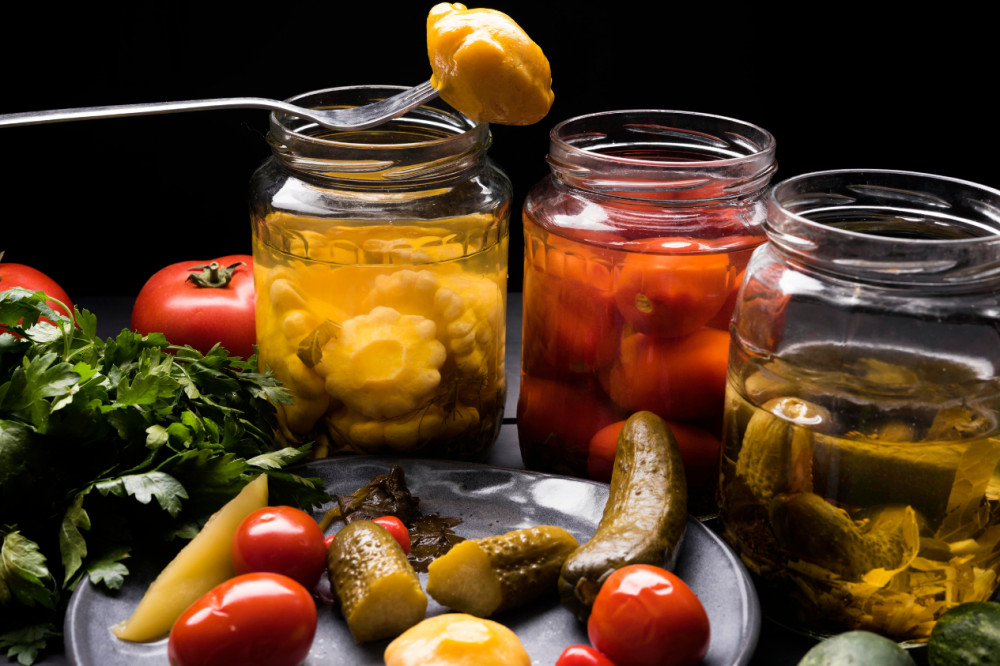
Kitchen Hygiene Hacks for the Humid July Season

As July approaches and we usher in monsoon clouds and heavy rain, kitchens everywhere will start to struggle. Humidity rises, vegetables spoil faster, sponges never dry, and mysterious smells start to leak out from the corners. If you are a home cook, culinary professional, or food business owner, it's time to step up your kitchen hygiene game in July.
Welcome to your go-to guide for kitchen hygiene hacks in humid July—a mixture of science-backed tips and innovative suggestions that will help keep your kitchen clean, safe, and monsoon-ready.
1.Creating DIY antifungal kitchen spray
How to Make:
- 1 cup white vinegar
- 10–15 drops of tea tree essential oil
- Juice of half a lemon
- 1 cup water
- Optional: Crushed basil or neem leaves
Combine all ingredients in a spray bottle and shake well. You can use this mixture on kitchen tops, counters, cutting boards, sink area, under the stove and around trash bins. The tea tree oil and the vinegar are natural antifungal agents, and the lemon juice offers antibacterial properties that neutralise kitchen odours, and basil/neem enhances microbial resistance.
2. Dehumidify Naturally with Rock Salt or Baking Soda
Humidity can be stealthy, creeping into corners and the unwanted areas of the cabinets. You can effectively keep them dry and mold-free, too, by placing open bowls of rock salt or baking soda in those areas.
Where to place them:
- Under the sink
- Inside the pantry cabinet
- Near the trash bin
- Behind the refrigerator
Rock salt and baking soda are both natural desiccants that absorb moisture and deter the growth of mold, mildew, and bacteria. You can throw a bay leaf or clove in these bowls; they absorb odour and deter insects.
3. Sun-Dry Your Storage Containers and Tools
When we have little breaks in the monsoon sunshine, you can utilise some natural UV rays and place your cleaned spice jars, pickle bottles, cutting boards, and wooden spoons in the sun for 30-60 minutes.
Benefits:
- Kills microbial accumulation
- Reduces the moisture trapped in containers
- Removes unwanted smells from jars
Label jars with the last time they were exposed to the sun to establish a fun and functional tracking system for your kitchen.
4. Pack Away Bread & Dry Snacks
Humidity is the enemy of snacks. It changes crisp to soggy and fresh to moldy.
Bread Storage Tip: Use parchment paper to wrap bread or put it in a sealed container lined with paper towels.
Snack Storage Tip: Put a muslin pouch filled with uncooked rice (or food-safe silica gel) in snack jars. Also, place them in airtight containers—not plastic packets!
Tip: Reuse a clean, dry glass jar to store cut fruit. Glass jars seal better and don’t capture moisture like plastic does.
5. Rotate & Sanitise Towels and Napkins Regularly
Kitchen towels are some of the dirtiest items in the monsoon. They stay moist and encourage mold and bacteria growth in the humid air.
Cleaning Process: Soak kitchen towels in hot water with detergent, a ½ cup of vinegar, and a sprinkle of baking soda, and wash them every two days.
Towel Zoning:
Arrange towels by colour for different uses, which are:
- Wiping dishes
- Cleaning hands
- Mopping counters
Pro Tip: Keep a towel that you can microwave handy for disinfection!
6. Keep Your Dish Rack Mold-Free
Dish racks collect water when drying dishes, especially under any trays that are added to the dish rack and can become prime territory for mold to grow.
Things you can do to prevent mold:
- Put a microfiber mat or absorbent cloth under your dish rack.
- Wash the tray under the dish rack every two–three days with a vinegar-water solution.
- Wipe your dish rack dry after the dishes air dry.
Upgrade: If you can, use a foldable dish rack on the counter or wall wall-mounted dish rack to allow for air flow and better drainage that lasts beyond the washing of the dishes.
7. Make Your Pantry Pest-Free with Herbs and Citrus.
Monsoon is the wet season to not only put a damper on plans but to add other pantry invaders like ants, cockroaches and beetles.
Herbs and Citrus to ward off pests:
- Bay leaves in rice/flour bins,
- Cloves in spice racks,
- Dried lemon peels in sugar containers,
- Neem leaves in cabinets.
These herbs and citrus can act as natural, aromatic insect repellents without interfering with the flavour of your ingredients. Seal all flours, lentils, and dry fruits in airtight containers after checking for moisture or weevils.
8. Deep Clean Your Refrigerator Once a Week
You know that during the monsoon, your refrigerator is a wonderful condensation bomb, and if you neglect it, it can quickly turn into a microbial bonanza.
What to do each week:
- Take everything out of your refrigerator.
- Wash the shelves with a paste of baking soda + water.
- Take diluted vinegar and wipe down the sticky areas.
- Dry it well before adding items back in.
To keep it smelling fresh:
Put a small open bowl of coffee grounds, activated charcoal, or citrus peels inside to eliminate odours and keep the fridge smelling fresh.
9. Smart Veggie Storage during Monsoon
If you aren't careful with your veggie storage in July, some of your vegetables are done for.
Storage tips:
- For greens, use paper bags or cotton cloth wraps
- Never use plastic bags—wrapping greens in plastic will trap humidity
- Line the veggie drawers with newspapers or cotton napkins
- Don't stock up—buy fresh veggies 2–3 days apart
Bonus hack: Place a rice pouch in your veggie tray to absorb excess moisture and reduce spoilage.
10. Sanitize & Replace Kitchen Sponges - Regularly
Kitchen sponges are a hot spot for bacteria, and even more so on rainy, muggy days.
Sanitising sponges: Microwave a wet sponge for 60 seconds. (It must be wet or it can potentially catch on fire). Make sure to let the sponge cool off before using.
Replacing sponges: Replace kitchen sponges every 7 days during monsoon season, with no substitute.
Eco-Friendly Option: You can now use natural coconut husk scrubbers, and without the bacteria build-up, coconut scrubbers are biodegradable too.
Mood + Hygiene in One
Make this a Habit:
- Diffuse lemongrass, eucalyptus or citronella oil to keep the air fresh
- Have a mint, basil, and/or aloe plant in your windowsill.
- Use beeswax wraps and ditch cling film - they are breathable and do not hold moisture.
Display Reminders:
Consider having a chalkboard or printed sheet on the fridge with phrases such as:
- Wipe, Wash, Air, Repeat
- No damp towel left behind
- A clean kitchen is a safe kitchen
Don't let the Monsoon get you down in the kitchen—it is an opportunity to practice mindful, seasonal care. These hygiene hacks are simple and practical; you can transform your kitchen into a safe, fresh space where creativity can thrive. Food is only as safe or good as the hygiene practices around its preparation.
Stay tuned to Foodism for more useful insights!
Related Blogs

Meal-Prep Magic: Dinners You Can Plan for the Week
69 Views

Flavours of Mizoram: The Harvest Table You Need to Try
105 Views

Fusion Thanksgiving: India-Inspired Global Feast
116 Views

Food Offerings and Festive Plates of Kartik Purnima
230 Views

The Science of Ferment: Easy Homemade Fermented Foods
168 Views